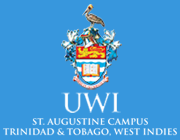BMET 2002 Introduction to Medical Physics
Course Description
The course will focus on different diagnostic methods, corresponding equipment and data analysis in medicine. The physics of the human body will be addressed in terms of the generation of electricity and the use of biopotential measurements. The production and use of different radiation types for diagnosis and cancer therapy will be introduced. This course will be assessed through coursework and a final examination.
CONTENT
Biomedical potentials: measurement of The Electrooculogram (EOG). Electrocardiogram (ECG) The Electromyogram (EMG). Electroencephalogram (EEG), and Magnetocardiogram (MCG) Problems in the amplification of biomedical potentials, frequency response, distortion, saturation and cut-off, ground loops, power line interference and elimination, electrical equivalent circuits, common mode voltage and equivalent circuit. Sensory system: human ear. Hearing and response of the human ear, noise pollution and OSHA requirements. X-rays and gamma rays conventional x-ray production bremstrahlung, characteristic x-rays technical problems with x-ray tubes image quality (shadow) Scatter. Minimizing scatter, image enhancement. Gamma-ray production with radioisotopes. Linear accelerator, Absorption, Beer-lambert law. Half-value layer, mean attenuation coefficient. Processes responsible for absorption Fluoroscopy theory and Stokes’ law. Fluoroscope, enhancement of fluoroscopic images. Tomography – focal plane, axial CT scanner, CT techniques. Basics of image reconstruction x-ray detection, secondary devices PMT, image intensifier tubes. Radioisotopes & radiation diagnosis. Units of radiation , general detection system. Principle in radio diagnosis using radiopharmaceuticals. Radiation therapy, concept of hits. Lethal dose, target therapy. Objectives of radiotherapy, RBE, dose magnitude and therapeutic ratio, techniques of radiotherapy, % depth dose, isodose curves, treatment planning. Use of isotopes as tracers, tracer techniques. Compartmental analysis: models of, occupancy principle, isotopic dilution analysis. Isotopic dilution analysis, isotope derivative method, flow measurements e.g. cardiac output. Nuclear medical imaging system. Rect. Scanner, gamma camera, treatment planning (optional) Thermography and heat treatment. NMR – imaging/ MRI imaging. Ultrasonics in medicine.
GOALS/AIMS
This course aims to:
- Enable students to develop a good understanding of the Physics of the human body in health and disease and the application of Physics to diagnosis and therapy.
- Produce graduates who can operate (or capable of being trained to operate) effectively as technologists in the medical sector of Trinidad and Tobago and the wider Caribbean.
- Produce graduates with good critical thinking and problem solving skills enabling them to adapt and improvise to address the various technological levels of the medical institutions in Trinidad and Tobago and the wider Caribbean.
- Serve as a training ground for potential research students in the local as well as international environment.
LEARNING OUTCOMES
After successfully completing this course, students should be able to:
- Explain with examples the different professions which apply physics to the study of medicine and biology;
- Apply basic principles of physics to the study of biological systems of body functions and to understand the operation of biomedical instrumentation;
- Explain the principles of radiation diagnosis and therapy and the use of nuclear imaging techniques in the medical environment.
- provide technical assistance in radiation therapy and diagnostics.
- Apply the following competencies within the practical and tutorial activities.
- Collect, analyse and organise information ( measurement data)
- Communicate ideas and information (testing & evaluation procedures)
- Work with others in teams to plan and organise activities(lab activities)
- Apply mathematical ideas and techniques (calculation and measurements)
- Solve problems ( related to design, function of circuits, computer programming)
- Use technology ( related to design and testing of circuits and systems).
Assessment






